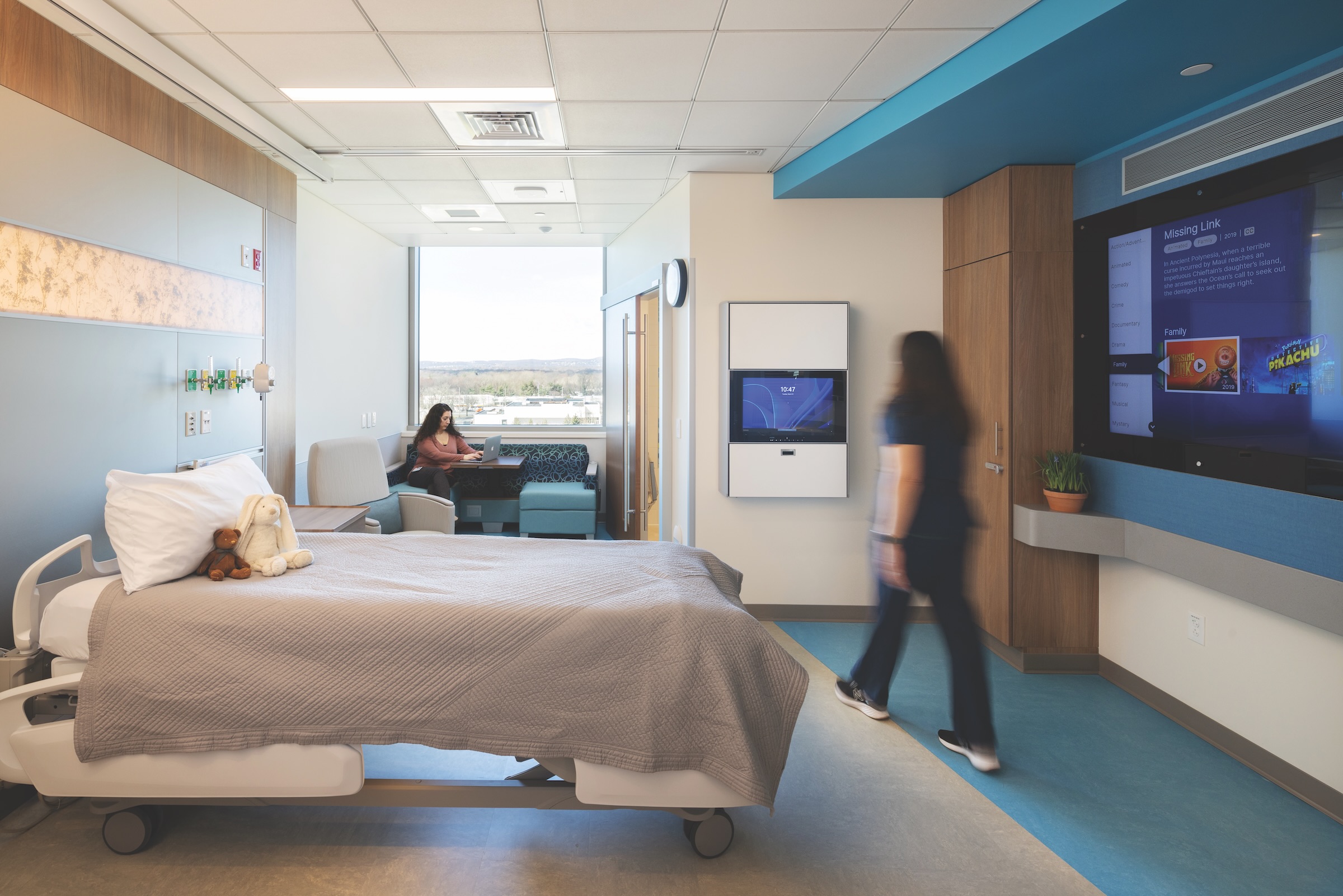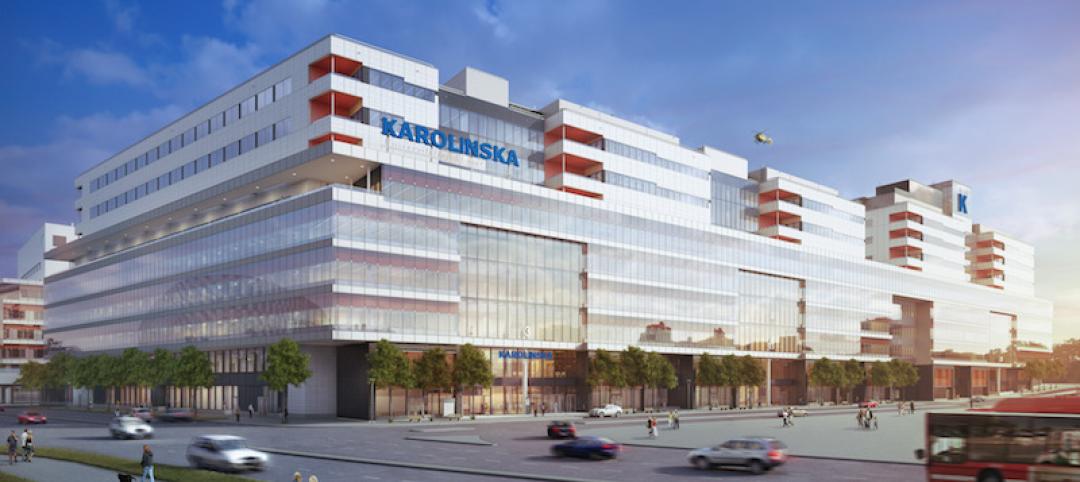On April 14, the new Valley Hospital, with 370 inpatient beds, opened in Paramus, N.J., 2½ miles from the previous campus of Valley Health System, a healthcare network serving northern and southern New Jersey. This HDR-designed and Torcon-built facility checks many of the boxes for hospital planning, building, and community outreach.
• It’s big: 900,000 sf on a 40-acre campus, with a nearly $900 million price tag;
• It’s patient-centric: larger, tech-enhanced inpatient rooms and an expanded 80-exam-room emergency department located next to diagnostic imaging services for easier access;
• It’s smart: the hospital’s operational technology includes artificial intelligence, smart footwalls, and real-time patient location systems;
• It’s community-responsive: Instead of renovating and expanding its old facility in nearby Ridgewood (a move that met with local opposition), Valley Health chose to build new, on a site where an Alexander’s department store once stood;
• It’s wellness-conscious: The hospital’s aesthetic appointments include an illuminated waterfall called a Serenity Oasis, rooftop gardens, and exterior murals that welcome patients and visitors;
• It’s sustainable: More than 30% of the campus is open green space, such as gardens, lawns, and walking paths. LEED Gold-level best practices for energy efficiency, space utilization, water consumption, and natural light have also been incorporated; and
• It offers one-stop care: The campus includes Valley’s medical office building, which houses Valley-Mount Sinai Comprehensive Cancer Care, a same-day surgery center, and a full-service retail pharmacy.
Valley Hospital is one of several projects that Building Design+Construction evaluated, along with interviewing executives from 16 AEC firms and health systems, to identify trends that are driving hospital design and construction in the $67 billion healthcare sector. Here’s what we found:
1. “Must Haves” start with flexibility in hospital design
The coronavirus pandemic caught the healthcare sector unprepared. Consequently, health systems are insisting on flexibility, adaptability, and expandability in the designs and programming of new or renovated hospitals that, in many cases, also lean toward sustainability.
Including shell space for future needs and growth is more common. And AEC firms say their clients are eager to enhance the “patient experience.”
Typical of this trend is Ochsner Health’s five-story, 131,998-sf Patrick Neuroscience Center in New Orleans, which is scheduled for completion in the first quarter of 2025, when it will aggregate 25 programs and 100 scientists under one roof. Its exam rooms are universal-designed. There is a space within the Center for alternative therapies that feature art and music. And through a partnership with Team Gleason, adaptive technologies show patients how to rehab in place, says Ryan Johansen, AIA, Principal with BWBR, the AOR on this project. This L-shaped building will allow clinics to flow into outside areas that include a healing garden.
An exterior garden, designed by Realm Collaborative, is part of the UC (University of Cincinnati) Health’s revitalization of its Clifton campus that was completed last year. The $221 million project included a 311,750-sf tower, designed by CannonDesign and built by Messer Construction, that adds three observation floors to the emergency department, and flexible ICUs.
Design flexibility isn’t solely for the benefit of patients, either. The recently approved hospital expansion of Henry Ford Health in Detroit includes Henry Square, the largest green space within a 30-minute walking distance in the city, says Jim Thomson, Central Region Director of Health for HDR, this project’s architect-designer.
10 trends that are driving hospital design and construction:
“Must haves” start with flexibility
Adjusting to a consolidating industry
Branding stokes expansion (and vice versa)
The “million/billion” club is getting larger
Design-build is the favored delivery method
Prefab and modular are now standards
Microhospitals meet the needs of smaller markets
Hospitals are linking wellness with healing
Futureproofing hospitals for growth and change
Design races to keep up with patient and tech trends
Bonus trend: Tech touches everything from construction to Ops
“In the past, the focus [of hospital design] was on attracting patients. That’s still the case, but it’s also about attracting more staff” to counteract shortages, says Ryan Hullinger, AIA, NCARB, Partner and Firmwide Healthcare Practice Leader for NBBJ’s office in Columbus, Ohio.
Another trend that he and other AEC sources say drives hospital design and construction is decarbonization. Hullinger notes that as part of its current 1.2-million-sf, 482-bed expansion, Massachusetts General Hospital in Boston is targeting a 90% reduction in its carbon emissions, and to operate on 100% renewable energy.
Joe Jouvenal, COO for McCarthy Holdings, notes that systems like Kaiser Permanente have committed to decarbonization goals, as states like California and New York impose tougher emission standards.

While demand for resilience measures varies across the country, protecting their hospitals from natural disasters is now on more developers’ to-do lists. McCarthy and J.T. Vaughn Construction are joint-venture partners on a new 33-acre pediatric campus in Dallas that will include a microgrid from which to draw backup power.
On March 24, Gilbane Building Company and Health First broke ground on the Cape Canaveral Hospital and Medical Office Building in Merritt Island, Fla. The 268,000-sf hospital and campus will be built 13 feet above sea level. The Lawrence Group designed the building to withstand a Category 4 storm.
2. Adjusting to a consolidating sector
The hospital business is volatile. In 2023, 12 of 79 bankruptcies in the healthcare sector were hospitals, according to Gibbons Advisors. Kaufman Hall, a mergers and acquisitions consultant, estimates that two-fifths of U.S. hospitals lose money on operations, and that there were 65 announced mergers and acquisitions last year, up from 53 in 2022.
With that level of churn, “It would be easier to say what isn’t changing in healthcare,” says Mark Bultman, HGA’s Principal and Healthcare Market Sector Leader in Milwaukee, Wis. He notes that the nature of his firm’s clients has been evolving as well, with payers like Optum getting into care, and retailers impacting patients’ interface with services. (As a result, Bultman says HGA is asked more frequently to provide strategic advice.)
There’s a lot of reasons why health systems consolidate: geographic or specialty expansion, greater operational efficiencies, financial pressures, new competition. “Larger systems are getting together and blending cultures,” says Norman Morgan, Global Health Practice Leader for HKS in Dallas. HDR’s Thomson says he’s hearing more clients talking about “franchised healthcare systems,” which are leading those systems to apply universal design guidelines.
Industry consolidation may leave fewer independent hospitals in its wake. But these combinations often result in rebranding and “design opportunities” to present consistent experiences to patients, says Amy Douma, a Vice President with HGA Architects + Engineers in Minneapolis–St. Paul.
None of the AEC firms interviewed said that consolidation has delayed or halted hospital projects. CannonDesign, which does a lot of master planning for hospitals, even had one client—the University of Missouri—change leadership and make an acquisition during the planning phase of one project, without any interruptions, recalls Natalie Petzoldt, AIA, LEED AP, EDAC, the firm’s Principal and Healthcare Leader in St. Louis.
Perhaps counterintuitively, as health systems consolidate, they also continue to bring care closer to where patients live, often via single-purpose buildings like surgery centers, says Don Rosen, Buro Happold’s Principal and Director of US Healthcare.
In March, a joint-venture partnership between Northeast Georgia Health System and Lifepoint Health broke ground on a former grocery store site in Gainesville for a 62,000-sf, two-story rehabilitation hospital with 40 beds and shell space for 10 more. Hoar Construction is the GC on this project, which should be completed by next April.
3. Branding begets expansion (and vice versa) in healthcare design
During the third quarter of 2023, construction began on the 230,000-sf Irma and Norman Braman Comprehensive Cancer Center. When this $250 million project opens in late 2025, it will be the 21st building on Mount Sinai Medical Center’s 55-acre campus in Miami Beach, Fla. One side of that property faces a bridge over which an average of 150,000 cars per week pass the hospital, says Angel Pallin, Mount Sinai’s Senior Vice President and COO.
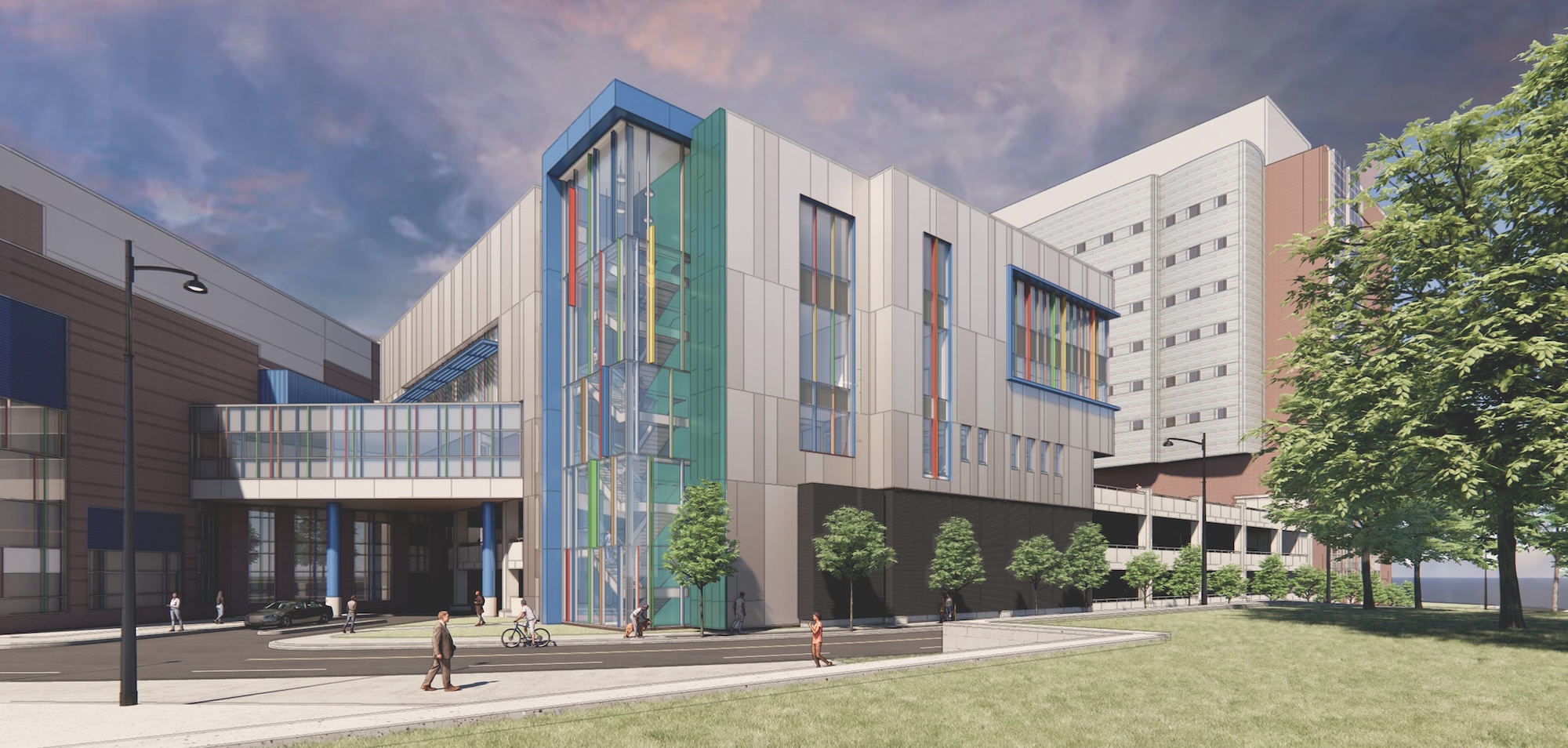
There’s no dispute that this campus contributes to Mount Sinai’s branding, as does the system’s affiliation with care programs backed by Columbia University for cancer, urology, cardiology, and orthopedics. Branding has become an increasingly important part of healthcare systems’ growth and revenue strategies. These systems are also creating synergies by clustering new buildings offering specialty practices or services.
There are myriad examples of this trend, such as the three-story, 50,000-sf Pediatric Heart Institute that HGA Architects + Engineers is designing for the UPMC Children’s Hospital of Pittsburgh. The Institute will be built, by Rycor Construction, atop an existing parking garage, and be attached to the hospital via a skybridge, reinforcing the UPMC’s status as a leader in pediatric cardiology, says Kyle Weisman, AIA, NCARB, Vice President, Principal, HGA.
HKS’s Morgan, in Dallas–Fort Worth, is seeing more of these “centers of excellence” that integrate hospitals, medical office buildings, research and teaching centers, and so forth. “It’s all about patient convenience, with everything tied together behind the scenes,” he explains.
Morgan notes that in Texas, this trend can manifest itself with a main hospital serving as a hub for satellite buildings in surrounding markets that serve as spokes. He points specifically to health systems such as Baylor Scott White, whose main campus is in the DFW metroplex, that is building a new hospital tower in Waxahachie; and Fort Worth-based Cook Children’s Health Care, which is working on a new community hospital in Prosper, Texas.
“There’s more systemwide thinking,” observes HGA’s Douma, “and more thinking as a network.” That includes the ongoing trend of healthcare systems joining forces on projects, such as the million-sf, 400-bed hospital expansion of Henry Ford Health’s campus in Detroit, which features a medical research facility for Henry Ford and Michigan State University Health Sciences.
4. The million/billion club is adding new members
When Penn Medical opened the doors, in October 2021, to its 1.5-million-sf, $1.6 billion replacement hospital pavilion in West Philadelphia, little did many people know at the time that this 17-story project, developed by PennFirst, augured what is now a spate of hospital campuses whose newest buildings meet or exceed those size and cost thresholds.
The price tag for the Henry Ford Health expansion is pegged at $3 billion. Ohio State University is currently undertaking its largest-ever single facilities project with a $1.8 billion, 1.9-million-sf inpatient hospital––designed by HDR and built by a joint venture between Turner Construction and Walsh Group––on its Wexner Medical Center campus that, when the hospital opens in 2026, will have 820 private-room beds, and more space for research and clinical training.
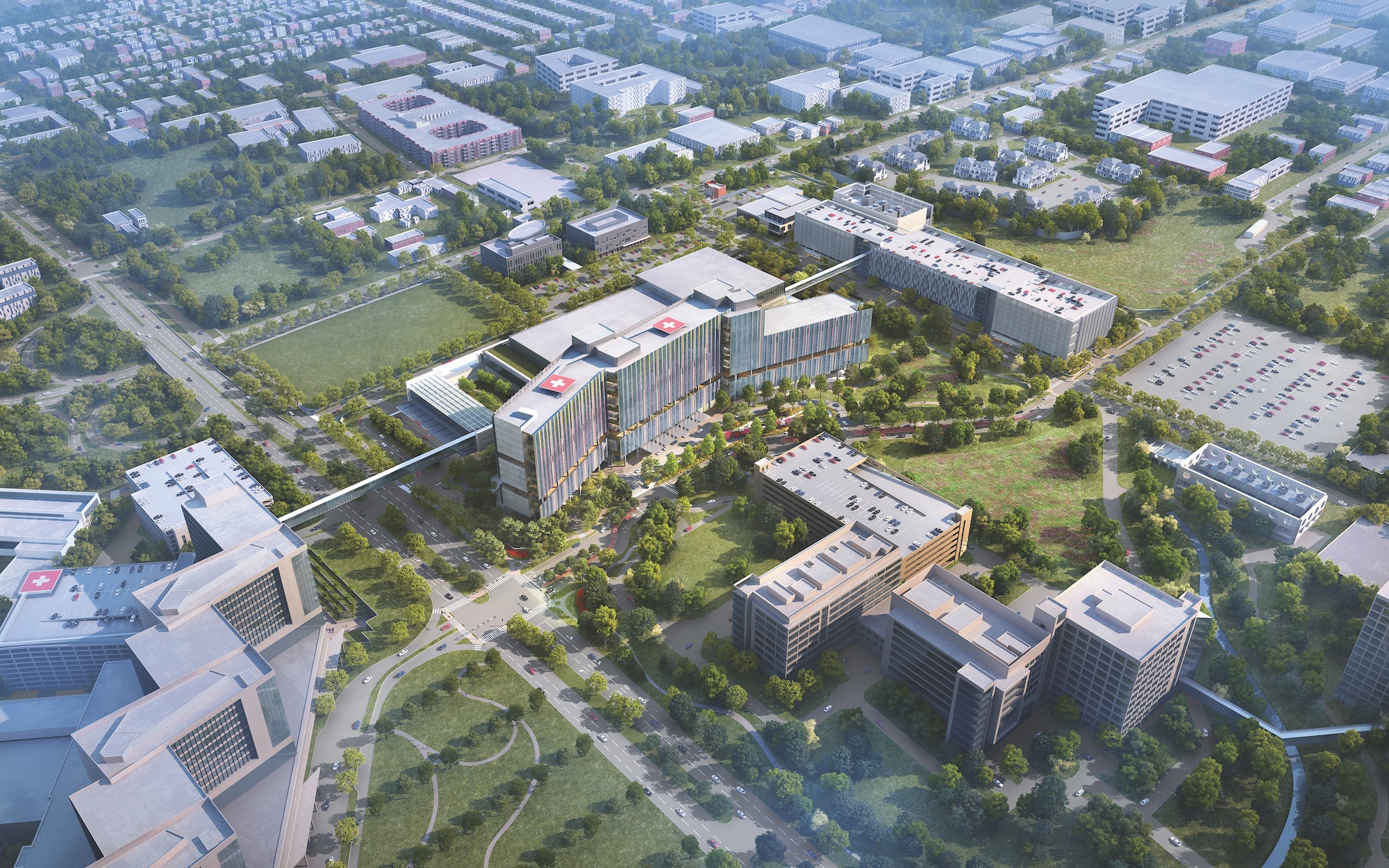
In Dallas, Children’s Health and UT Southwestern Medical Center are preparing to start construction on a 33-acre pediatric campus in anticipation of projected increases in the region’s child population. The $5 billion, 4.5-million-sf project, which will take six-to-seven years to complete, will add 15% to the healthcare systems’ ED space and 22% more operating room space. “The programming need dictated its size,” explains Michael Malone, Project Executive for the joint venture between the campus’ contractors McCarthy Building Companies and J.T. Vaughn Construction.
During a 12-month period ending in the summer of 2022, UCSF Helen Diller Medical Center turned away 3,800 patients for lack of space, according to the San Francisco Chronicle. Under way is the construction of a 15-story, 1.5-milllion-sf, $4.3 billion replacement hospital complex at Parnassus Heights that is scheduled for completion in 2030.
CannonDesign is currently working on four hospital projects, each of them budgeted for at least $1 billion. “There will be larger buildings in the future,” asserts Petzoldt, whom BD+C interviewed with Arjun Bhat, AIA, the firm’s Associate Vice President. McCarthy Holdings’ Jouvenal says his firm has more million/billion projects in the works than ever before.
“It’s a little mind-blowing how large some projects become,” observes Russell Templin, Senior Vice President of Healthcare for JE Dunn Construction. Even smaller projects with 100-150 beds are master-planned to expand to 300-400, he says.
AEC firms say hospital size is a function of several factors: the preference for private patient rooms, industry consolidation, increased care services, population shifts. Plus, with inflation and supply-chain snags, “a billion dollars doesn’t go as far as it used to,” quips Templin.
And it’s not like midsize medical centers aren’t still in demand, especially for suburban markets. “Outpatient surgery and lower-acuity hospitals are generally smaller, and seismic upgrades drive size,” says Christina Grimes, Health Practice Leader for NBBJ in Philadelphia.
5. Delivery methods encourage collaboration in hospital construction
Rider Levett Bucknall, which has been involved in more than $10 billion worth of healthcare projects over the past five years, has observed over that time a “growing trend” toward project delivery methods that open the way for design and building team collaboration.
On its website, HDR describes working on the new Valley Hospital campus in New Jersey as a “highly integrated Lean-led design process that brings together key stakeholders.” Hospital clients “want more building team collaboration, with all of the right players in place,” says Morgan of HKS. “But that requires a lot of vision sessions.”
HKS and Perkins&Will are codesigning the new pediatric campus in Dallas. While this mega-project is being delivered under conventional contracts, “the clients asked us to act like an integrated team,” says Rachel Knox, a Principal and Pediatric Practice Leader for HKS. The colocation room for design choices has more than 60 seats, says Ian Sinnett, a Principal with P&W. That team, with the client, developed guidance and vision statements. A third-party arbiter, Matt Hunt, sits in on sessions where the team discusses what designs are or aren’t working.
Malone says the McCarthy Vaughn Partnership created a structure “that mimics the design team.” An executive leadership team works with component partners to sort out design, constructability, budget, and scheduling issues. A governance structure dictates what each level is responsible for.
On other McCarthy projects—such as a 660,000-sf replacement inpatient hospital bed tower, designed by CannonDesign, for Barnes-Jewish Hospital on the St. Louis campus of Washington University—Malone says his firm invites major trade partners to join the design team early in the design process.
Building team collaboration “is a thinking game” partly to avoid regulatory barriers, says Chris Morris, VP–National Healthcare for the GC Swinerton. HGA’s Weisman adds that early collaboration “makes tweaking [projects] easier.”
With collaboration, “you can do some extraordinary things,” says HGA’s Bultman. He’s suggests, too, that the best results derive from incentive-based contracts that can produce “lightning in a bottle.”
Collaboration can also mediate the gaggle of voices—donors, subs, the community at large—that demand to be heard from. “Architects need to manage the chaos to achieve consensus,” says NBBJ’s Hullinger.
6. Prefab and modular are the new standards
NBBJ has worked with prefab and modular components for hospital projects since at least 2010. A tower it’s designing for Atrium Health in Charlotte, N.C., is targeting between 50 and 60 percent prefab, says Hullinger. “More projects than ever” build with components produced offsite, he adds.
The installation of prefab components valued at more than $200 million is expected to reduce construction time by four to six months for the $1.8 billion, 820-bed inpatient tower on the Ohio State Wexner Medical Center campus in Columbus, designed by HDR and scheduled to open in early 2026, according to Daryl Bodewin, HDR’s Vice President and Director of Strategic Projects.
“We consider prefab for every hospital project,” says Amy Mays, Interior Design Director for HDR’s office in New York. Thomson, the firm’s Central Region Director of Health, calls prefab “the new standard” for hospital design. “It’s just baked in, especially on a project this size,” says Knox of HKS, referring to the Pediatric campus in Dallas that HKS and Perkins&Will are designing.
JE Dunn Construction has had “great success” with prefab components that include MEP racking, bathrooms, exteriors, and head- and footwalls, says Templin, in Nashville. Prefab provides greater scheduling and cost certainty for contractors, says Mays. Morris, who works out of Swinerton’s office in Sacramento, elaborates that hospital clients like prefab for its “repeatability,” optimization, and cost reduction potential.
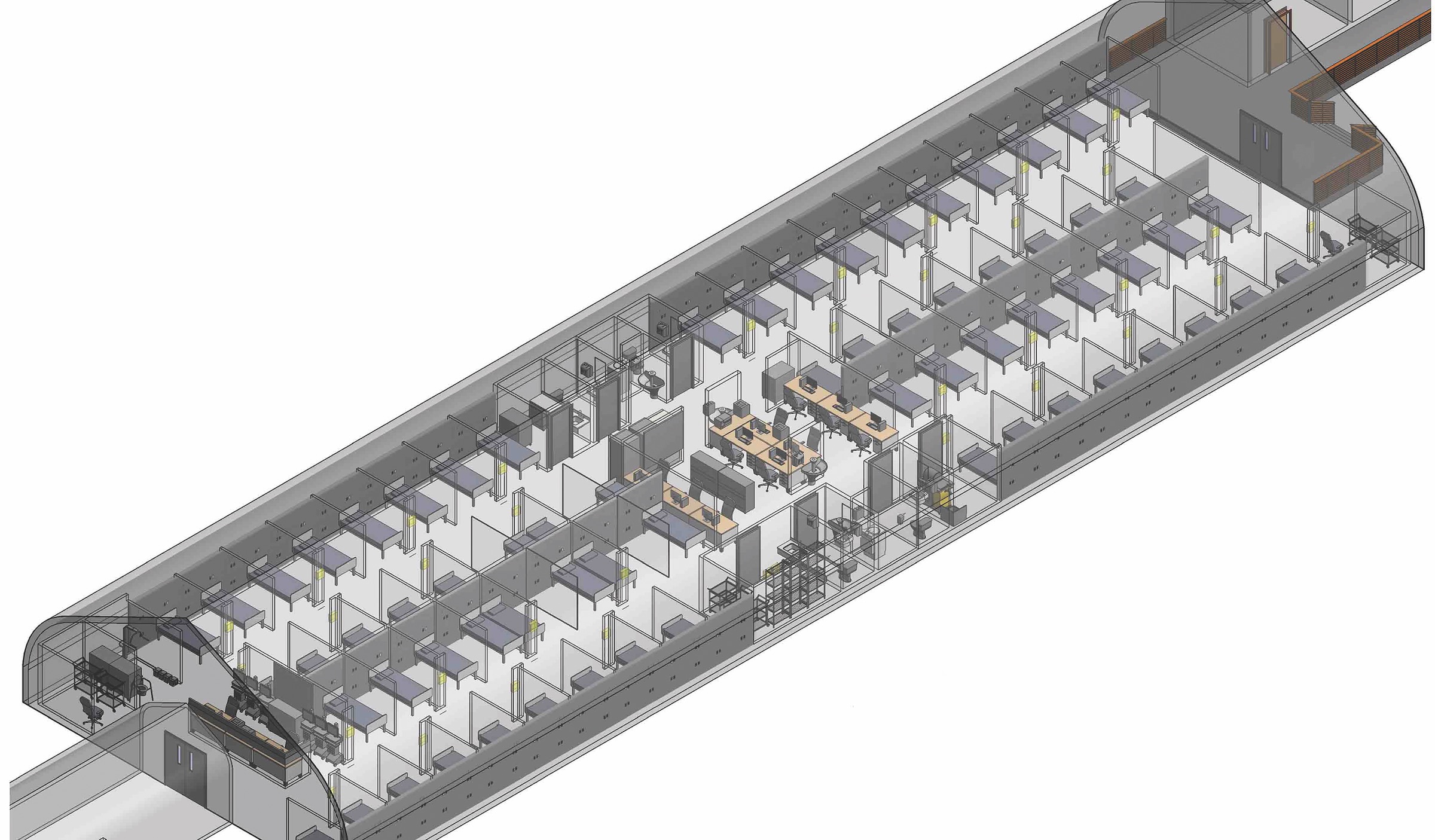
Demand for volumetric modular solutions for hospitals has been increasing since the coronavirus outbreak, when HGA and The Boldt Company made waves with temporary critical care units branded as STAAT MOD. In 2023, Stantec designed Pandemic Response Units for the Peter Lougheed Hospital is Calgary, Alberta, that was able to add 60-plus exam spaces next to its ED in 22 days. In July of that same year, the University of Rochester (N.Y.) Medical Orthopedics Surgery Center, designed by P&W and The S/L/A/M Collaborative, unveiled Clean Cube, the world’s first prefab operating room with automated disinfection technology.
Now it’s common for hospital projects to incorporate prefab modular bathrooms and exam rooms. HGA’s Bultman is convinced that modular will continue to be “an important part of how buildings get built,” as long as clients understand the value proposition where upfront costs are balanced out by quicker ROI.
7. Microhospitals meet needs of underserved markets
On March 8, the Lehigh Valley Health network held a ribbon-cutting ceremony for a one-story, 22,000-sf acute-care hospital with 22 beds in Macungie, Pa., the second half of a two-building campus that includes a three-story medical office building which opened last December. The microhospital was the first built in Lehigh Valley in 50 years.
At a time when mega-size hospitals are spreading like kudzu across the country, microhospitals haven’t lost their appeal as community care providers. The microhospital market is expected to increase annually at a rate of 8 percent from 2023 and reach $455 billion in spending by 2030, according to recent estimates by Data Bridge Market Research.
The January 1 merger of Froedtert Health and ThedaCare Health joined two systems that are committed to the microhospital concept for growth. Froedtert ThedaCare broke ground in February on a campus in Fond du Lac, Wis., that will have a 25,000-sf, $35 million hospital scheduled for completion next year. (HGA is the design architect and engineer, and Miron Construction the construction manager.) This will be the combined system’s 19th hospital, and its fifth micro, each with eight inpatient beds and eight ED beds.
“We’re excited about them,” says Isaac Larson, Executive Director of Enterprise Facility Services for Froedtert Health. “They give our portfolio diversity, the investment isn’t overwhelming, and the return is high.”
At first, Larson recalls, Froedtert saw micros as a way to “decant” the number of patients surging into its larger academic hospitals. But what it eventually found was that patients view micros as their “first stop” for care.
Microhospitals, he says, allow Froedtert ThedaCare to deliver a full range of healthcare services to suburbs and inner cities. (Its micro in Mequon, Wis., sits on only 1.79 acres.) The hospitals also extend the brand of the Medical College of Wisconsin, with which the system has a strategic alliance.
Besides HGA and Miron, Froedtert has hired the architecture, design and engineering firm EUA, and contractors CD Schmidt and Ryan Cos., for its microhospital projects.
8. Hospitals link wellness with healing
The Braman Comprehensive Cancer Center in Miami Beach will have 56 chemotherapy treatment rooms, all of them with calming vistas of Biscayne Bay. Each of the building’s five above-grade floors will have respite rooms for staff. And $200,000 of the construction budget are earmarked for art.
Across the country in San Francisco, the UCSF Helen Diller Medical Center in Parnassus Heights is designed by HDR and Herzog & de Meuron to meet “whole-patient needs” by providing light-filled private rooms, natural spaces, fresh air, and human connection. Within the new Barnes-Jewish Hospital in St. Louis that should start accepting patients in mid 2025, two rooftop gardens will offer patients, families, and staff access to fresh air and repose.
The connection linking wellness with healing has never been stronger in new hospital projects’ designs and construction. “More hospitals are thinking about patients’ journey to recovery,” says Bhat, the Associate Vice President with CannonDesign.
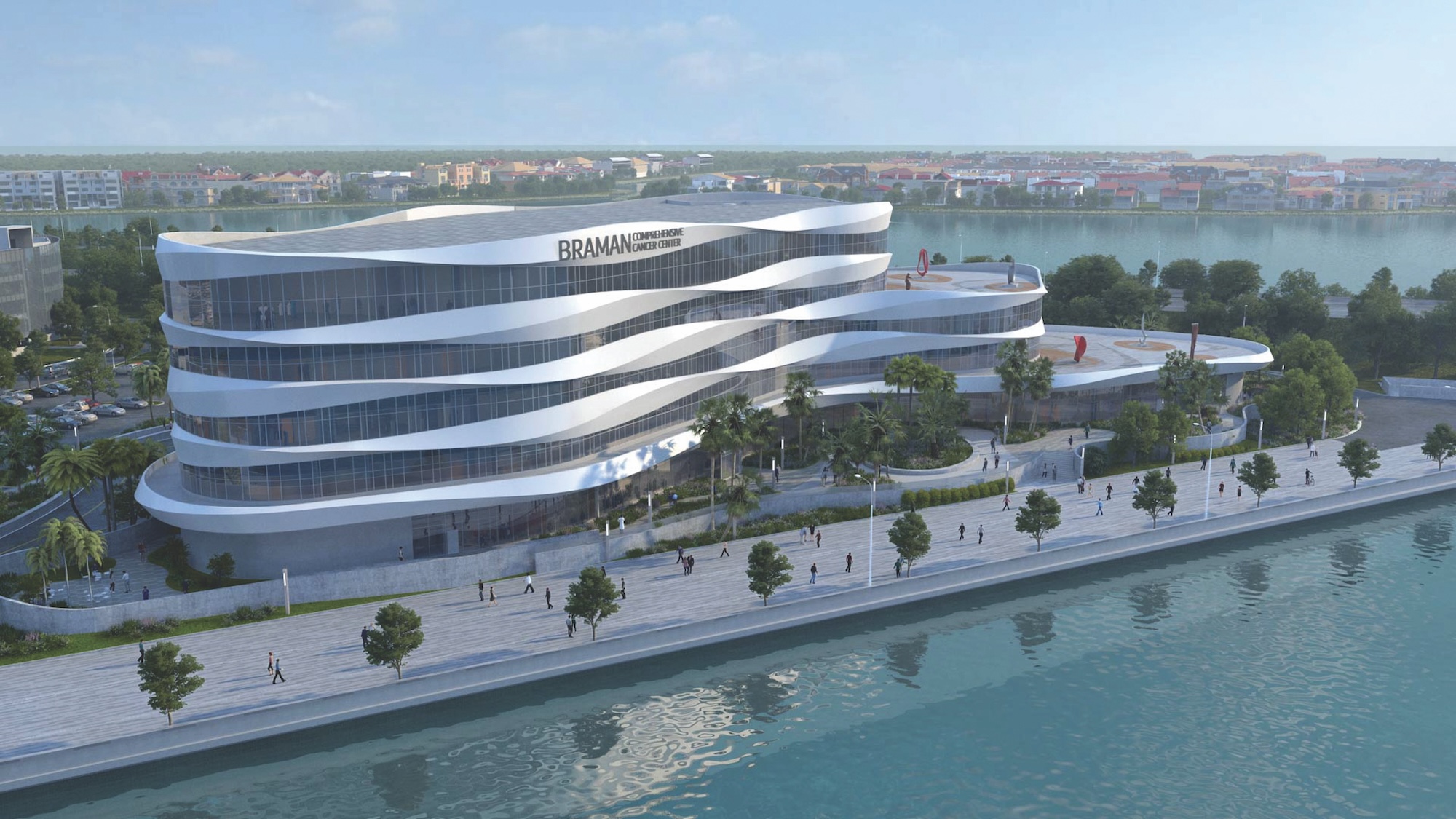
Wellness can be placed within the context of hospitals’ broader focus on mental and behavioral healthcare. JE Dunn’s Templin has seen an “uptick” in hospital clients’ requests for spaces for behavioral treatment. HGA’s Douma says hospitals are dedicating more space for treatment of mental or behavioral diseases or disorders.
Elisandra Garcia, Director of Engagement for Portland, Ore.-based architecture firm El Dorado, speaks about “trauma-informed design” that gets patients to feel safe. That design incorporates biophilia, outdoor and garden spaces for “relaxation and connection,” and larger areas for patients and families to convene.
Douma notes, however, that the challenge for hospitals is when patients manifest multiple mental health conditions that require more acute interventions.
Texas Health and Human Services Commission has approved $573 million for the construction of the 250-bed Terrell State Hospital, one of 10 hospitals in the planning stage. The Terrell replacement facility, which is scheduled for completion in the fall of 2027, will feature state of the art therapeutic spaces in a secure environment for patients experiencing mental illness, says Scott Schalchlin, HHSC’s Deputy Executive Commissioner for Health and Specialty Care. (Cannon Design is the architect; Walter P Moore, Martinez Moore, and MEMPCE are the engineers.)
The hospital will have separate rooms for patients who are deemed dangerous to themselves, as well as separate quarters for adults and children. “The highest [design] priority was ensuring patient and staff safety,” says Schalchlin.
9. Futureproofing for the inevitable and unexpected
The 1-million-sf expansion of Henry Ford Hospital’s campus in Detroit is billed as “a hospital for the next 100 years.” Its private patient rooms, ICUs, acute care, and operating rooms are being tricked out with the latest technology. An enlarged Emergency Department will encompass specialized space for trauma care and behavioral health. Its rehab hospital will team with The Shirley Ryan AbilltyLab, a nationally recognized physical medicine and research hospital based in Chicago.
But if the recent pandemic signaled anything, it was that healthcare needs are unpredictable. The best that healthcare systems can do is watch trends to make educated assumptions about how to futureproof their hospitals.
Perhaps the most obvious trigger for change is the need to replace aging hospitals past the expiration dates. The Braman Comprehensive Cancer Center will replace a 60,000-sf cancer center that both Mount Sinai Medical Center and the market outgrew, says Pallin, Mount Sinai’s COO. The new building has “lots of space for future expansion,” he says, including the entire fifth floor.
“Shell space is a release valve for hospitals,” says NBBJ’s Hullinger, who notes that some clients are fitting out these spaces for quicker use when needed.
In South San Jose, Calif., whose population is aging, Kaiser Permanente wants to replace its 50-year-old medical center with a 685,000-sf, six-story hospital that would be twice the size of the old one, and whose 303 beds would increase Kaiser’s bed count in that market by 23 percent. According to the Mercury News, the new hospital––whose construction is slated to start next year and be completed by 2028––will include a 35,000-sf energy plant.
Hospitals are preparing themselves for the next pandemic with the acknowledgement that it might not be anything like the coronavirus outbreak. The new inpatient tower for Barnes-Jewish Healthcare’s campus in St. Louis includes “pandemic-ready flex space” that would allow the hospital to isolate potentially infectious patients and accommodate surges in higher-acuity patients.
McCarthy and CannonDesign are leading the design-build team on that project. Jouvenal, McCarthy Holdings’ COO, says that futureproofing hospitals is tough because “there’s not a lot of consistency from building to building.” He expects innovation and technology to step forward in future designs and anticipates greater use of robotics in hospital operations.
HGA’s Douma is seeing more interest among healthcare systems in sustainability and the relationship between climate and health. And Morgan of HKS predicts that artificial intelligence could be a significant factor in how hospitals are built and operate.
10. Multiple advice sources keep hospital projects on track with change
A new hospital can take years, even decades, to plan and build. During that period, technology and medical discovery continue to march forward. Even patients’ relationship to and expectations about healthcare can change.
How, then, can health systems ensure that new hospitals are current with technology and treatment when they open? “That’s the Magic 8-ball question,” says Weisman of HGA, which is always asking “what will the future look like?”
At the very least, hospital planning can build in more space for equipment and growth. And health systems have been setting operational goals––like achieving net-zero emissions by a certain year––that guide new hospital projects on their paths to the finish line.
Mount Sinai Medical Center relies on advice from its physicians, and its partnerships with Columbia University and architects like CannonDesign, to stay ahead of trends and tech shifts, says Pallin.
But predicting the future “is hard, especially when equipment is the last thing that’s talked about,” says Rosen of Buro Happold. Morgan of HKS says his firm encourages conversations with tech consultants, and earlier collaborations with other building team members.
AEC firms say their hospital clients often delay certain construction phases so their projects can accommodate late changes, like new imaging technology that might affect the size of the machines. “The role of the medical equipment planner is a key part of our healthcare practice,” says NBBJ’s Hullinger. “They keep an eye on the horizon.”
He adds that hospitals are anticipating a greater role for robotics in their day-to-day operations, which would require wider corridors and smoother floors.
As patient satisfaction is now a factor in determining treatment reimbursement, hospital planning often turns to patients for their input on design and operations. The new pediatric campus project in Dallas has a Patient and Family Committee that meets to provide feedback from their current experiences. Malone, the Project Executive for that project’s McCarthy Vaughn Partnership, says this committee “will also be an important part of the fully functional mock-up reviews that our team will be developing this year, well prior to ever framing one wall on the project.”
Bonus: Tech touches everything
As part of its design process for the UPMC Children’s Hospital Heart Institute in Pittsburgh, HGA Architects pushed virtual reality “to the brink,” says Weisman. That included assembling clinicians within a VR environment so “we could make on-the-fly adjustments,” based on needs.
Technology is pervasive in hospital design and, more evidently, construction and operations. Mount Sinai Medical Center is promoting its Braman Comprehensive Cancer Center as “high touch/high tech,” with the building striving for a concierge experience, says Pallin. The recently opened Valley Hospital in Paramus, N.J., features “patient-centric” technology: smart beds, wireless patient tracking, sensors, tablets for patient/staff communication.
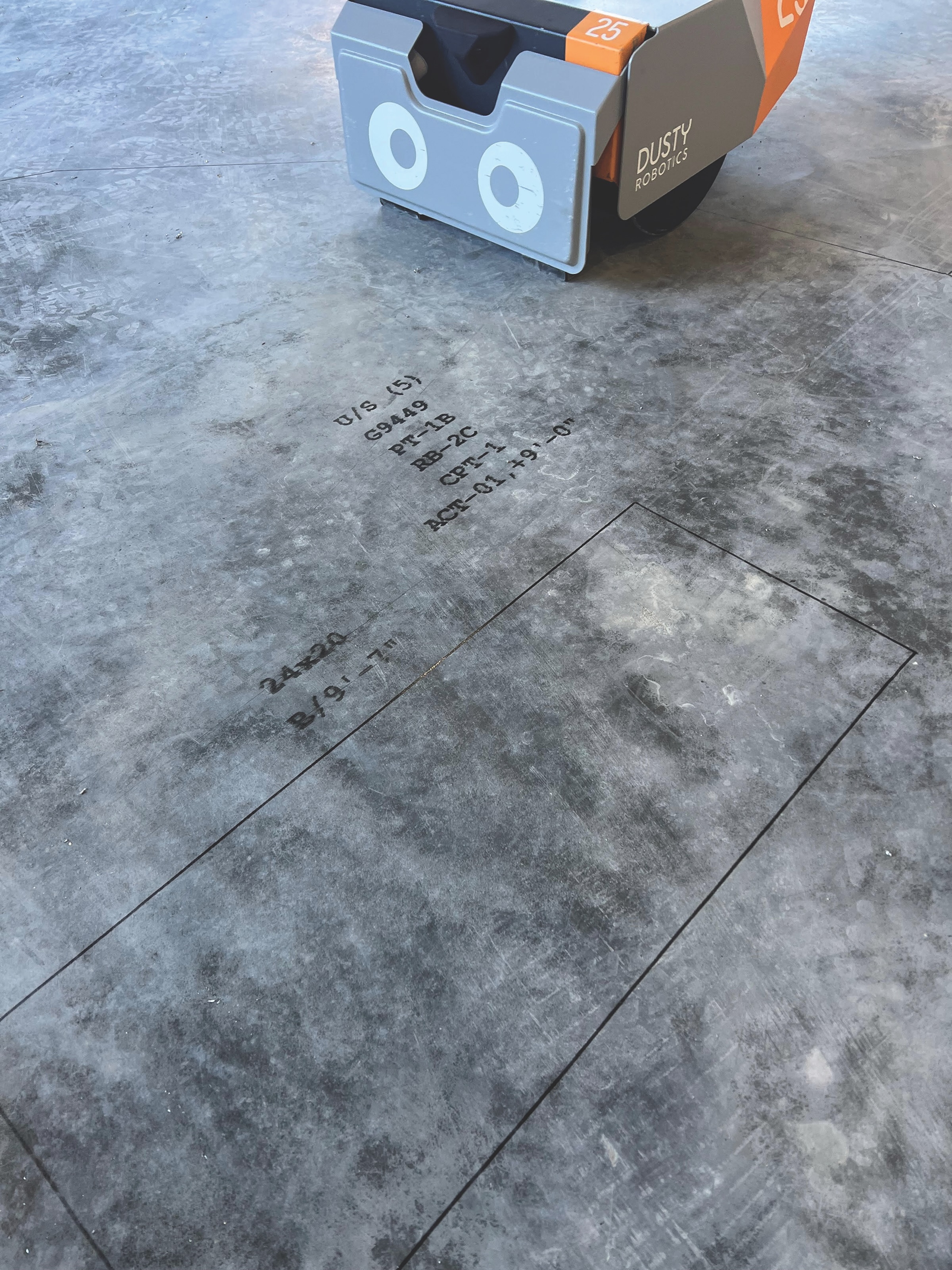
To design the new inpatient hospital at Ohio State University Wexner Medical Center in Columbus, HDR deployed VR and augmented reality “to help clients visualize the rooms,” says Bodewin, the firm’s Director of Strategic Projects. Patient rooms include 75-inch smart TVs that double as patient monitors, and cameras for consults between families and doctors. Houston Methodist Hospital’s Cypress campus will open in the first quarter in 2025 with a 570,000-sf hospital equipped with technologically advanced innovations, including those designed to facilitate patient-staff conversations.
AEC sources add that some hospital clients are moving toward patient recognition software that activates from the moment the patient arrives at the facility.
Bodewin notes that OSU’s hospital will be “robot ready.” Hospitals are testing robotics to improve their operational efficiency at a time when staff shortages are hampering services. Douma of HGA notes that Abbott Northwestern Hospital in Minneapolis, part of the Alina Health network, has been using autonomous mobile robots on its loading dock for waste removal.
Robots are abetting hospital construction projects, too. Walls and ceilings contractor RG Construction used robots supplied by Dusty Robotics for laying out renovations and additions to Advocate Aurora Illinois Masonic Hospital of Chicago. RG’s $27 million contract entailed the installation of 100 prefab exterior panels, 250 prefab bath pods, and the ceiling system. The building has large floor plates and lots of curvature, so the robot was needed “for greater measurement accuracy at a given moment, that other trades can follow,” says Luther Lampkin, RG’s Director of Construction Technology and Innovation.
But there’s also a dark side to hospital technology. Becker’s Hospital Review reported that in 2023, 141 hospitals were hit by 46 ransomware attacks, 32 of which stole data. And last Feb. 21, Change Healthcare, the nation’s largest billing and payment clearinghouse, was hacked and effectively shut down for nearly a month.
Cybersecurity for hospitals “is a massive challenge and concern,” says Jouvenal of McCarthy Holdings.
Related Stories
Healthcare Facilities | Aug 16, 2016
The future of healthcare design education: 5 takeaways from ACHA 2016
Creating a network of experts to talk next generation healthcare design education
Healthcare Facilities | Aug 15, 2016
Future proofing hospitals
By improving the physical layout of hospitals and medical facilities, we can enhance and increase safety mechanisms, improve care, and help reduce the exposure to medical errors, writes Skanska USA's Andrew Quirk.
Healthcare Facilities | Aug 10, 2016
11 principles for pediatric healthcare design
Engagement at all levels, designing with families in mind, and integrating flexible spaces are all important design considerations to keep in mind for pediatric healthcare planning, writes HDR's Brian Zabloudil.
Healthcare Facilities | Aug 9, 2016
Key strategies to reduce healthcare facility costs and maintain operations
The right approach during the planning, design, and construction of a new facility can yield a positive return on investment and lower the overall cost basis for ongoing operations, writes Steve Higgs, Senior Managing Director with CBRE Healthcare.
| Aug 8, 2016
HEALTHCARE GIANTS: Age-simulation technology aids design for the mobility impaired
As the 65+ population continues to rise, the AEC industry needs to better understand the stresses and anxieties those who are mobility impaired face when navigating spaces like medical facilities.
| Aug 8, 2016
Top 80 Healthcare Engineering Firms
AECOM, Jacobs, and WSP | Parsons Brinckerhoff top Building Design+Construction’s annual ranking of the nation’s largest healthcare building sector engineering and E/A firms, as reported in the 2016 Giants 300 Report.
| Aug 8, 2016
Top 100 Healthcare Construction Firms
Turner Construction Co., McCarthy Holdings, and Skanska USA top Building Design+Construction’s annual ranking of the nation’s largest healthcare building sector construction and construction management firms, as reported in the 2016 Giants 300 Report.
| Aug 8, 2016
Top 90 Healthcare Architecture Firms
HDR, Stantec, and Perkins+Will top Building Design+Construction’s annual ranking of the nation’s largest healthcare building sector architecture and A/E firms, as reported in the 2016 Giants 300 Report.
Healthcare Facilities | Jul 25, 2016
AIA selects seven winners of healthcare building design award
The National Healthcare Design Awards recognizes functional hospital projects that solve aesthetic, civic, urban, and social concerns. Recipients were selected in three categories this year.
Architects | Jul 22, 2016
5 creative approaches to finish standards
With the right mindset, standards can produce great design for healthcare facilities, as VOA's Candace Small explores.


